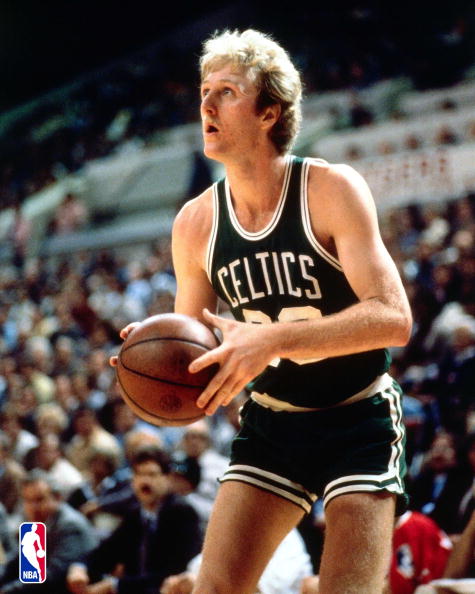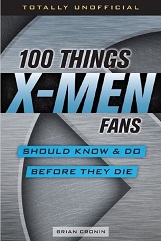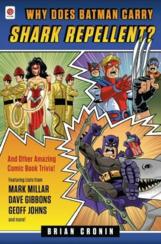Did the “Larry Bird Exception” Get Its Name From The Celtics Using it on Larry Bird First?
Here is the latest in a series of examinations into urban legends about basketball and whether they are true or false. Click here to view an archive of the basketball urban legends featured so far.
BASKETBALL URBAN LEGEND: The “Larry Bird exception” to the NBA salary cap got its name from the Celtics being the first team to go over the salary cap to re-sign one of their players, namely Larry Bird.
In 1983, the National Basketball Association (NBA) gained a great deal of attention due to their Collective Bargaining Agreement (CBA), which instituted a salary cap for player salaries. Neither the National Football League, National Hockey League or Major League Baseball had salary caps at the time.
The salary cap was set to kick in for the 1984-85 season. However, while the original intention was to create a so-called “hard cap” (where there was a set limit to how much teams could spend and they could not go over this limit), the NBA quickly adopted a “soft cap” instead. By a “soft cap,” I mean that teams could exceed the cap on how much they could spend on salaries (which was $3.6 million to start with, but otherwise 53% of league revenue) but only under certain circumstances.
One of the most famous examples is that teams were allowed to re-sign their own player, even if in doing so, they exceeded $3.6 million. They could do so by matching offer sheets given to the free agent player by another team or simply giving the player a new contract. This was to allow teams not to be forced to let their players leave simply to stay under the cap. The NBA figured that it would be better for the popular teams to retain their stars if they so chose.
This rule exists to this day, only further modifications have made it so that not only is it possible for teams to re-sign their own players, but it is actually in the financial best interests of players to not leave their original team, as they are limited to four-year contracts if they sign with other teams but can sign five-year contracts with their own team (and their own team can give their players larger yearly increases in salary than other teams can).
While technically called “Qualifying veteran free agents,” this exception has long since been referred to as the “Larry Bird Exception,” as it supposedly was developed so that Larry Bird, a free agent after the 1983-84 season, could be re-signed by his team, the Boston Celtics.

That might very well have been the intent of the rule (to specifically make sure that Larry Bird did not have to leave the Boston Celtics). However, the rule was not actually used on Bird! At least not back then!
Going into the 1983 offseason (the months preceding the 1983-84 season), the salary cap had not yet kicked in – except for the five teams who had already exceeded the $3.6 million cap the previous season, namely the Los Angeles Lakers, the New York Knicks, the New Jersey Nets, the Philadelphis 76ers and the Seattle Supersonics. These teams were locked in at whatever they spent the previous season (which was pretty silly as the Lakers were over $5 million and the Nets were just barely over $3.6 million). Every other team in the NBA had free reign to spend at will.
In fact, in a bizarre application of the rules, it actually benefited teams to spend a lot of money in the 1983 offseason, because whatever they spent in salary would therefore become their salary cap for the 1984-95 season the same way the other five teams were locked in at what they spent.
As you might imagine, this put those five locked-in teams at a bit of a disadvantage on the open market, and the New York Knicks, in particular, were put through the wringer by the Boston Celtics. The Knicks were interested in signing Boston Celtic free agent Kevin McHale. The Celtics, knowing of the Knicks’ interest, went out and signed three of the Knicks’ free agents, including popular guard Rory Sparrow, to offer sheets for significant bumps in salary. The Knicks had planned on first signing McHale and then re-signing their own free agents (using the exception to go over the cap). The Celtics’ maneuver forced the Knicks to re-sign their own free agents first, leaving them not enough room under the cap to sign McHale.
The Celtics then re-signed McHale for $4 million for four years (and later in the regular season renegotiated Robert Parish’s salary, as Parish was irked that he was now making less than McHale).
It was during this offseason that the Celtics signed Larry Bird to a then-historic contract – seven years and $12.6 million, thereby preventing Bird from becoming a free agent the next year. The contract was signed on September 28th, 1983. At the time, though, there was no salary cap, so the Celtics did not require an exception to re-sign Bird – they could sign him outright.
The Celtics’ deals with Bird and McHale, added to Parish’s new contract and contracts with other current players such as Dennis Johnson, Cedric Maxwell and Danny Ainge, put the Celtics well over $5 million in salary to just those six players, all before the $3.6 million salary cap ever went into effect!
After the 1983-84 season (which ended with the Celtics winning the NBA Championship), with their salary cap now locked in, the Celtics re-signed one of their own free agents, Cedric Maxwell, to a lucrative contract extension. Maxwell would be the first Celtic to be signed using the so-called “Bird exception.”
So while I will certainly allow that there is a very good chance that the “Bird exception” was, in fact, designed to allow the Celtics to re-sign Larry Bird, it was not actually used to re-sign Larry Bird.
Amusingly enough, a similar situation occurred years later when the NBA signed a new CBA in 2005. This new CBA included a one-time rule allowing teams to waive a player and have that player’s salary no longer charged to their luxury tax (in the NBA at the time, every dollar spent over a certain “luxury tax threshold” was charged to the team twice – so if the threshold was $68 million and the team spent $70 million, the team had to pay an additional $2 million in luxury tax payments for a total of $72 million – for teams well over the threshold, it certainly adds up. The current CBA makes luxury tax payments even more onerous).
This new one-time rule was called the “Allan Houston Rule,” because of the New York Knicks guard who was owed $40 million by the team over the next two years, which would mean that the Knicks would have to kick in another $40 million in luxury taxes (since they were well over the luxury tax threshold). However, the Knicks ended up not using the opportunity to waive Houston, as they correctly predicted he would retire, and therefore insurance would pay for his contract. They instead waived forward Jerome Williams.
I think I see a pattern!
Do note, though, that in 1988, the Celtics finally did end up using the “Bird Exception” on Bird himself, as they signed him to another contract extension.
The legend is…
STATUS: False
Feel free (heck, I implore you!) to write in with your suggestions for future urban legends columns! My e-mail address is bcronin@legendsrevealed.com






Quite an amuzing story about Larry Bird. Well done mate